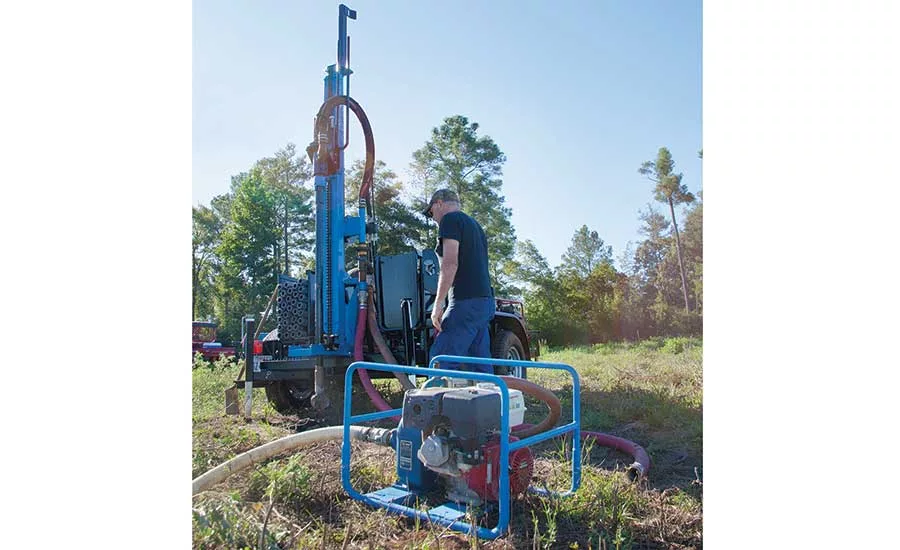5 Tips for Sealing a Water Well

After you reach water with any drilling project, it’s time to put the tools away and rest in a job well done — almost. Before you hang up your work boots, you must seal your well to protect it from surface water contamination. Without proper sealing, surface water may enter the borehole and contaminate the well water. Shallow groundwater might also be contaminated, so sealing the upper section of the borehole will protect the well.
Following a few best practices to ensure you have an effective, long-lasting seal will save you headaches down the road and give you peace of mind that your well is safe from contamination.
Be sure to extend the seal down to the first impermeable sediment layer. If there is no such layer above the aquifer, the sanitary seal should extend to the top of the gravel pack. The sanitary seal should be placed as deep as possible, preferably at least 20 feet (6 meters) deep.
To create an effective seal, make sure the borehole diameter is at least two inches greater than the casing diameter. If a 4-inch (10-centimeter) casing is being installed, the borehole should be at least 6 inches (15 centimeters) in diameter. This space is important because, without it, it’s nearly impossible to get a reliable seal deep enough to protect the well completely.
3. Use Neat Cement or Bentonite.
A cement mixture with no sand (also known as neat cement) or bentonite is ideal for creating a seal. Mixed with water, this forms a thin grout or slurry that will be pumped or poured down between the casing and the borehole wall. Drillers can use different combinations of cement and bentonite (equal parts, 5 percent, no mixture at all). When applicable, follow the guidelines of your local regulatory agency.
The slurry can be used to create a berm around the top of the borehole, preventing surface water from collecting around the top of the well. Bentonite chips or plugs are also available and make an effective sanitary seal. These chips will fall through any water in the borehole and swell up later. Add them slowly to prevent the formation of a bridge.
Related Reading
5. Wait to Install the Water Pump.
To allow time for the cement to set properly, wait at least 24 hours before installing the water pump.
To meet potential government standards, the “tremie method” is used to place a sanitary seal deeper than 20 feet (6 meters). This involves pumping the slurry down a small-diameter pipe in the annular space. Extend the pipe to the top of the gravel pack and slowly raise it as the slurry is pumped in. This will prevent the formation of bridges or water pockets. An alternative is to place a large funnel on the upper end of the tremie pipe and slowly pour in the slurry. It is usually necessary to do this standing on a ladder to generate enough pressure to get the slurry to flow through the pipe.
Taking a few simple steps will help prevent contamination issues and keep your well producing safe water for years to come. And don’t forget to regularly maintain your equipment during and between projects to ensure safe, efficient drilling.
For more resources on effective water well drilling, contact Lone Star Drills at 800-227-7515 or visit www.lonestardrills.com.
Looking for a reprint of this article?
From high-res PDFs to custom plaques, order your copy today!



